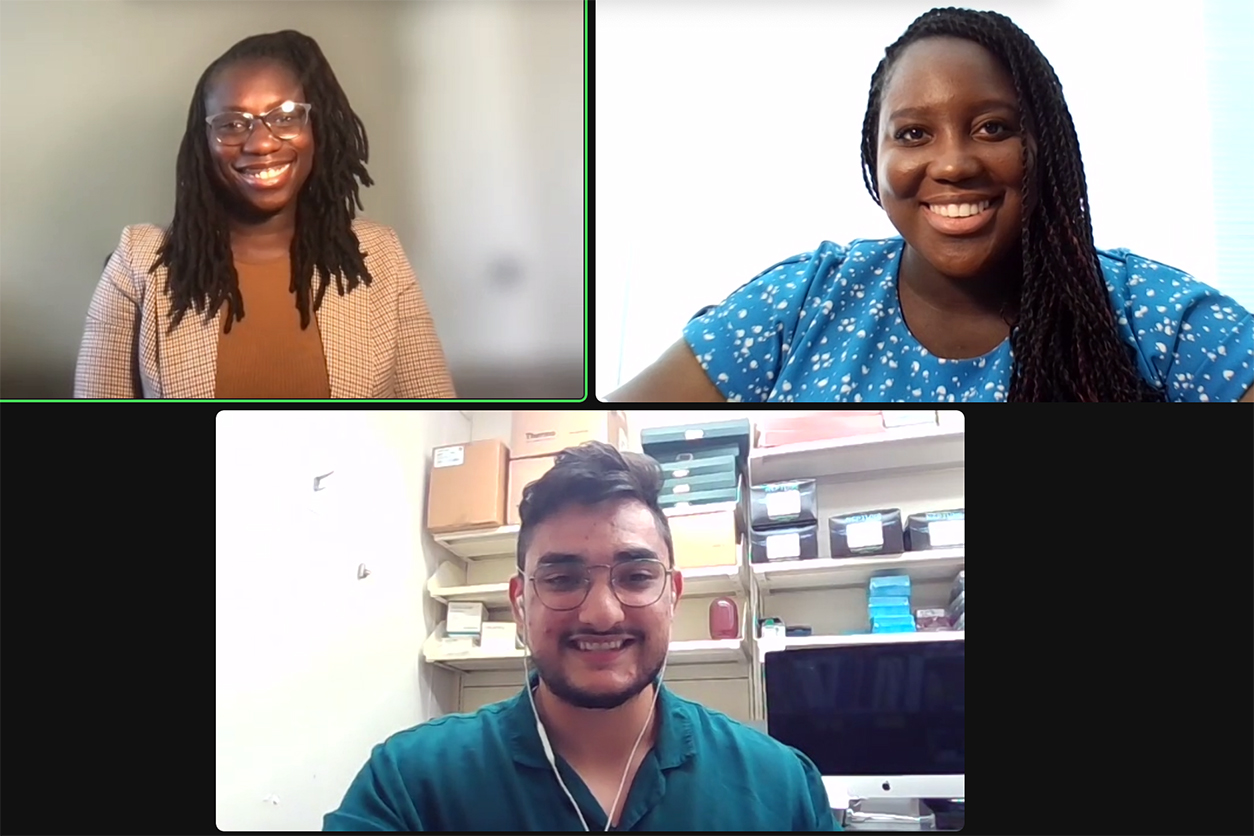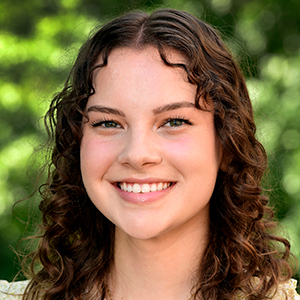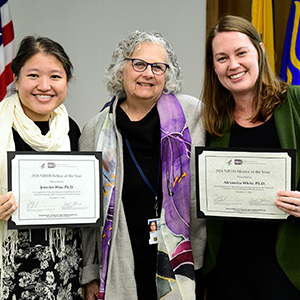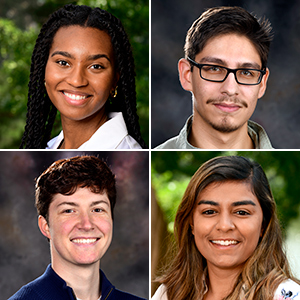Fifteen summer interns at NIEHS participated in the institute’s recent Big Picture, Small Talk Communication Challenge, where they presented a plain-language speech about their research. The competitors had three minutes to move the audience with the potential impact of their work on human health and to express how their training at NIEHS has furthered their professional development.
“Over the past two years, all of us have lost opportunities to have casual conversations in the elevator or at the water cooler about what we do every day,” said Katherine Hamilton, Summer Internship Program Coordinator and Postbac Program Manager. “I think now, more than ever, helping our trainees practice communicating science to a general audience is very important.”
The virtual event took place July 12, and the following three interns were recognized as winners.
- Ashley Phoenix, Neurobiology Laboratory, mentored by Serena Dudek, Ph.D.
- Sharonda Lovett, Epidemiology Branch, mentored by Dale Sandler, Ph.D.
- Kiran Kelly-Rajan, Mechanistic Toxicology Branch, mentored by G. Jean Harry, Ph.D.
 This summer, Phoenix, top left, conducted research on a specialized region of the brain that encodes social interactions; Lovett, top right, found that women who experienced early-life trauma before age 18 were more likely to develop high blood pressure in pregnancy; and Kelly-Rajan, bottom, used a high-resolution live imaging system to look at microglial cell dynamics in real time. (Photo courtesy of Katherine Hamilton)
This summer, Phoenix, top left, conducted research on a specialized region of the brain that encodes social interactions; Lovett, top right, found that women who experienced early-life trauma before age 18 were more likely to develop high blood pressure in pregnancy; and Kelly-Rajan, bottom, used a high-resolution live imaging system to look at microglial cell dynamics in real time. (Photo courtesy of Katherine Hamilton)Creating relatable analogies
Phoenix started strong by asking the audience to imagine the birth of 15,000 baby girls, their families watching them “learn to crawl, laugh, and use words for the very first time.” She then described how a year later, one of those daughters would develop problems with movement and coordination — and eventually lose the ability to talk, communicate, and socially interact — as the result of Rett syndrome, her area of research.
Rett syndrome is a neurological disorder caused by a mutation in a specific gene called MECP2. If MECP2 is “known as a manager gene” that affects what cells will become, Phoenix asked the audience, “what company does it work for?” She supplied the answer: “The hippocampus.”
“That’s a structure in our brain that’s able to control our spatial memories as well as our social memories — so, how well I’m able to remember my best friend since sixth grade, Chelsey,” Phoenix added. Her project focuses on the area of the hippocampus called CA2, which guides social interactions.
Traffic lights and foodies
The other competitors also found lively metaphors or familiar concepts to communicate the complexity of their work. Lovett likened opportunities for stress to traffic lights on a road trip. Her epidemiology research, she explained, investigates how the experience of red traffic lights — which could be thought of as early-life trauma — affect the quality of health later in life.
Lovett said that specific types of trauma, such as physical trauma, elevate the chances of high blood pressure in pregnancy compared to other types of trauma like natural disasters or major accidents. Her research suggests that the impact of early-life trauma on high blood pressure in pregnancy can be reduced when women receive constant social support as a child. “Essentially, swapping some of our red traffic lights for yellow traffic lights and making our road trip more enjoyable,” Lovett said.
Kelly-Rajan began to explain his research on specialized “clean-up” cells called macrophages by asking who likes to eat. “I know I do, and if you asked these cells called macrophages, they’d tell you they love it, too.” His project has looked at phagocytosis, the process by which macrophages and similar cells eat or clear bacteria and other biological waste from infections or inflammation. In particular, he is interested in a special population of macrophages called microglia that reside in the brain. Among their many activities, these cells can clear away materials that accumulate to cause Alzheimer’s disease.
Crowd-sourced judging
All NIEHS staff and scientists in attendance were given the opportunity to vote for their favorite presentations. The judges were asked to consider these elements of a successful presentation when making their choice.
- Did they clearly explain their research objectives?
- Did they explain how they conducted the research?
- Did they set forth the significance and impact of their research for a general audience?
- Was there an overall storyline?
- Was jargon suitable for a non-specialist audience, and did it stimulate your interest?
- Did the presenter speak clearly and with enthusiasm, and did they articulate what they gained from their NIEHS experience?
- Did the presenter finish on time?
Big Picture, Small Talk competitions take place three times a year — for postbacs, predocs/postdocs, and summer interns. This year NIEHS — for the first time — sent a trainee to the NIH-wide competition. Ayland Letsinger, Ph.D., progressed to the national competition, which was held on June 30. He represented NIEHS well and finished in third place. Letsinger is a postdoctoral fellow in the Neurobiology Laboratory, mentored by Jerry Yakel, Ph.D. His project aims to find out why people like — or don’t like — physical activity.
(Catherine Arnold is a contract writer for the NIEHS Office of Communications and Public Liaison.)









